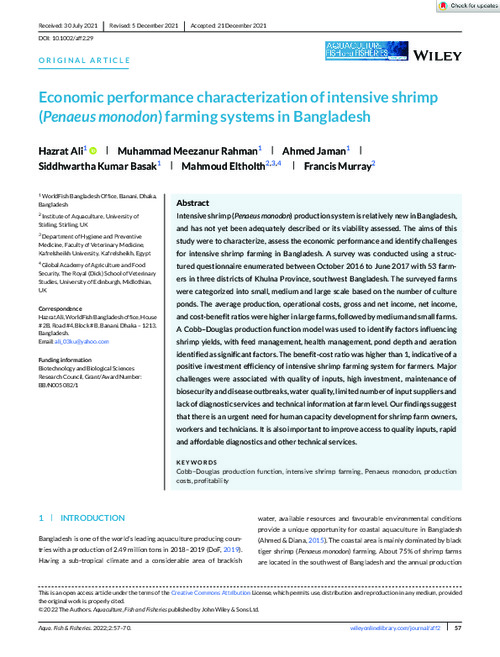Economic performance characterization of intensive shrimp (Penaeus monodon) farming systems in Bangladesh
Abstract
Intensive shrimp (Penaeus monodon) production system is relatively new in Bangladesh, and has not yet been adequately described or its viability assessed. The aims of this study were to characterize, assess the economic performance and identify challenges for intensive shrimp farming in Bangladesh. A survey was conducted using a structured questionnaire enumerated between October 2016 to June 2017 with 53 farmers in three districts of Khulna Province, southwest Bangladesh. The surveyed farms were categorized into small, medium and large scale based on the number of culture ponds. The average production, operational costs, gross and net income, net income, and cost-benefit ratios were higher in large farms, followed by medium and small farms. A Cobb–Douglas production function model was used to identify factors influencing shrimp yields, with feed management, health management, pond depth and aeration identified as significant factors. The benefit-cost ratio was higher than 1, indicative of a positive investment efficiency of intensive shrimp farming system for farmers. Major challenges were associated with quality of inputs, high investment, maintenance of biosecurity and disease outbreaks, water quality, limited number of input suppliers and lack of diagnostic services and technical information at farm level. Our findings suggest that there is an urgent need for human capacity development for shrimp farm owners, workers and technicians. It is also important to improve access to quality inputs, rapid and affordable diagnostics and other technical services

